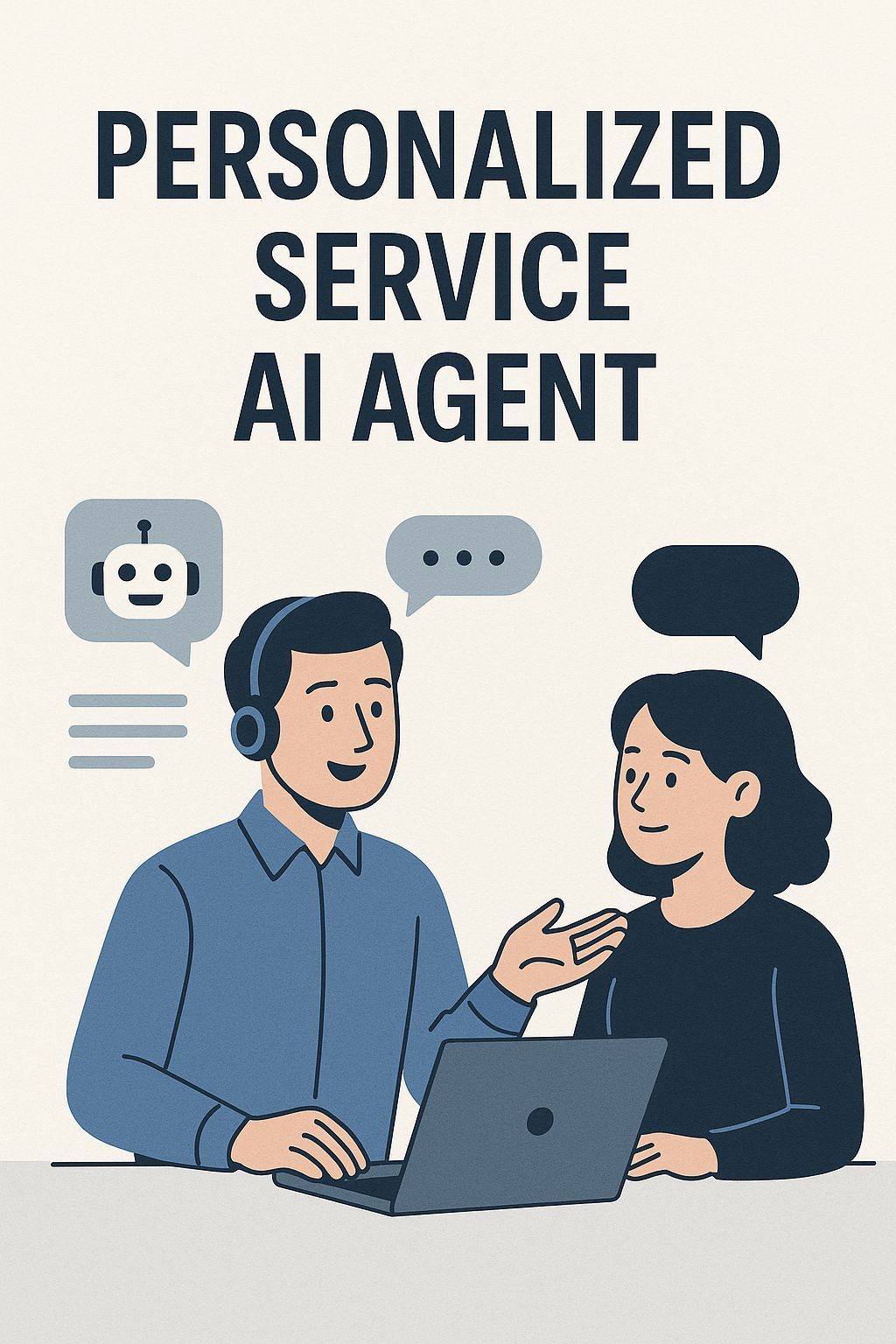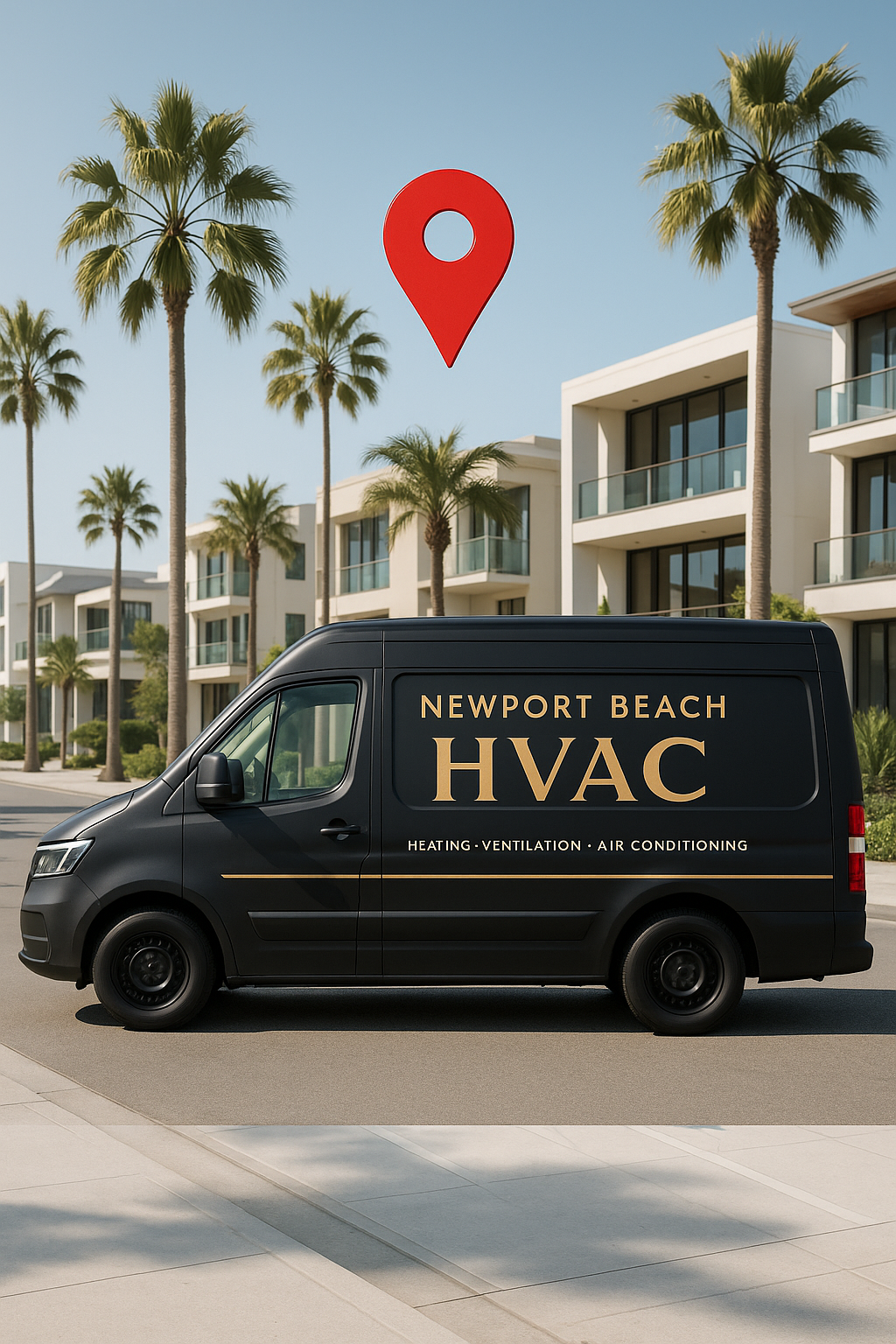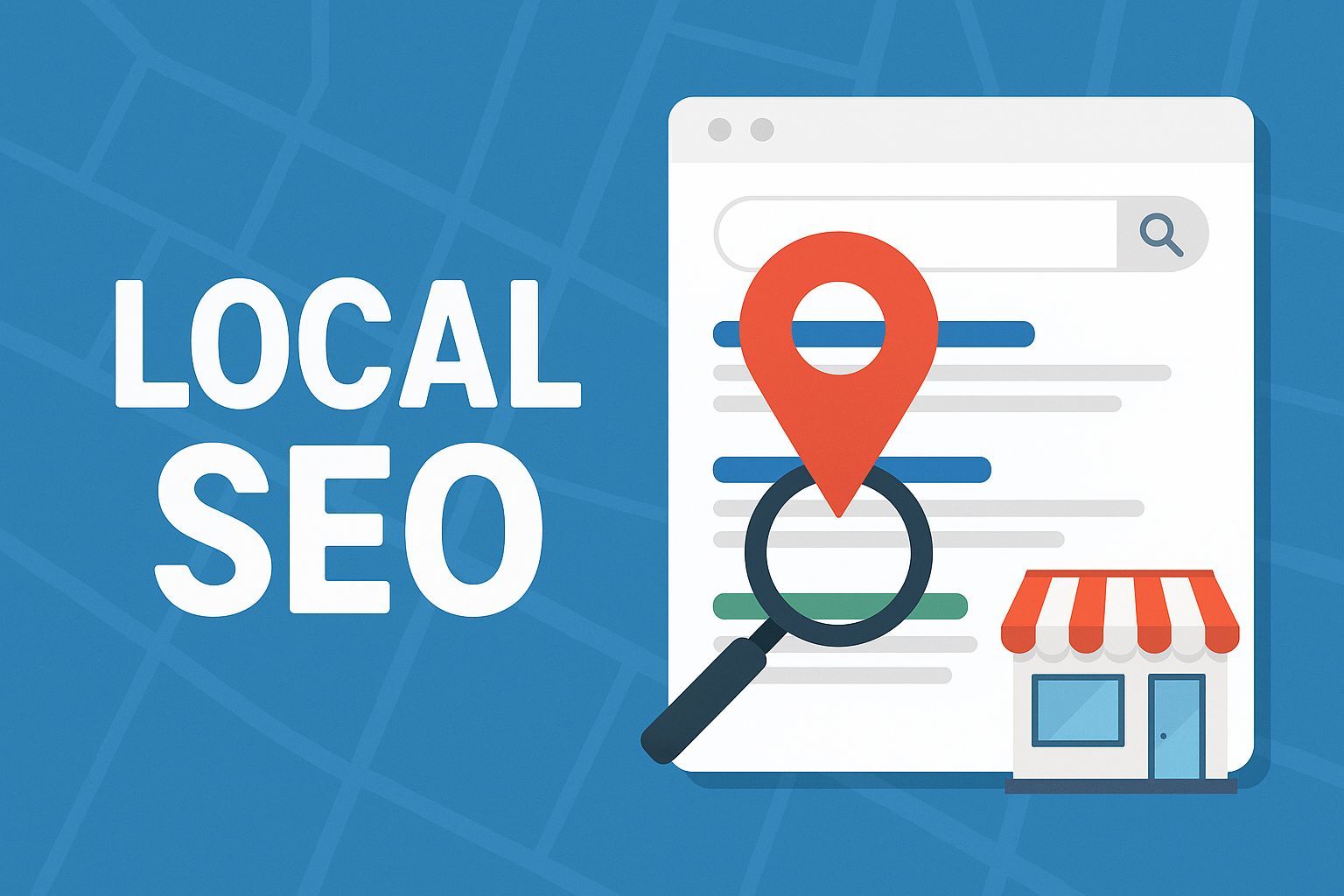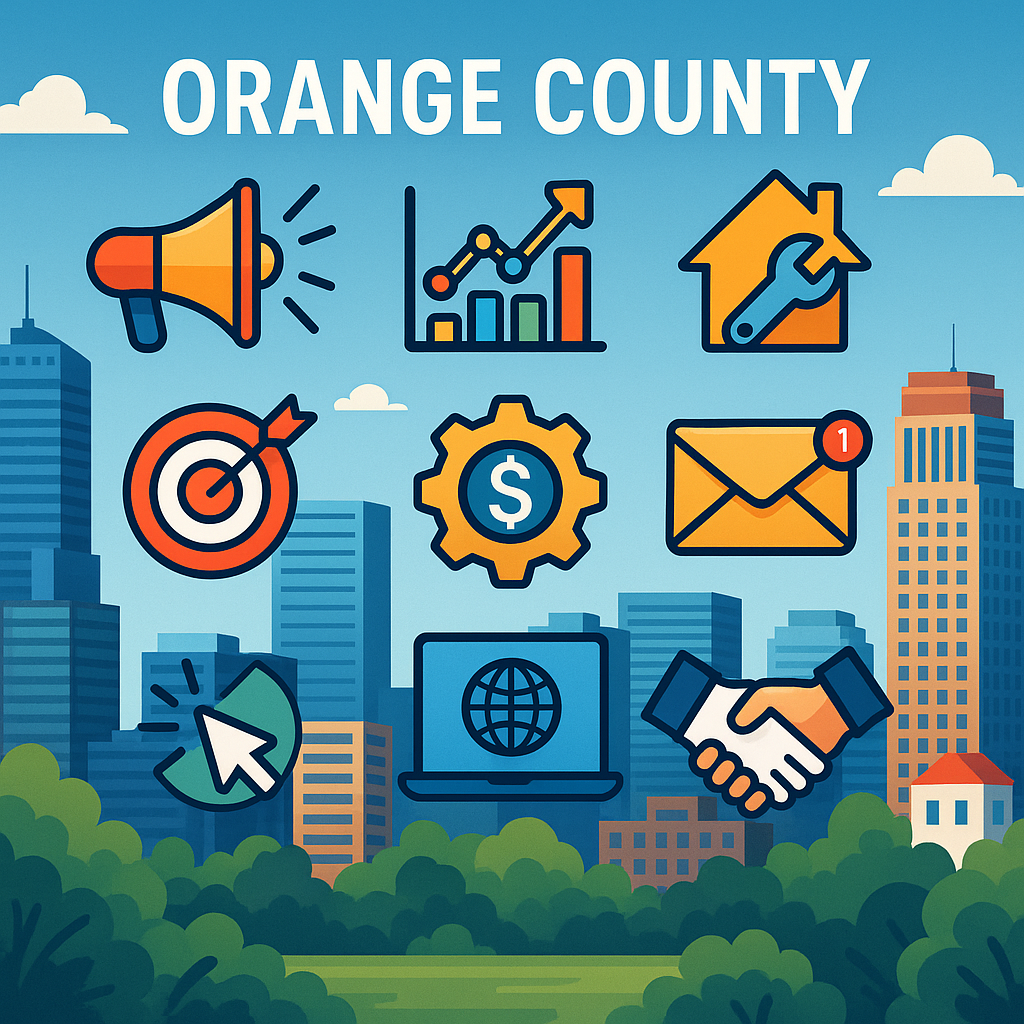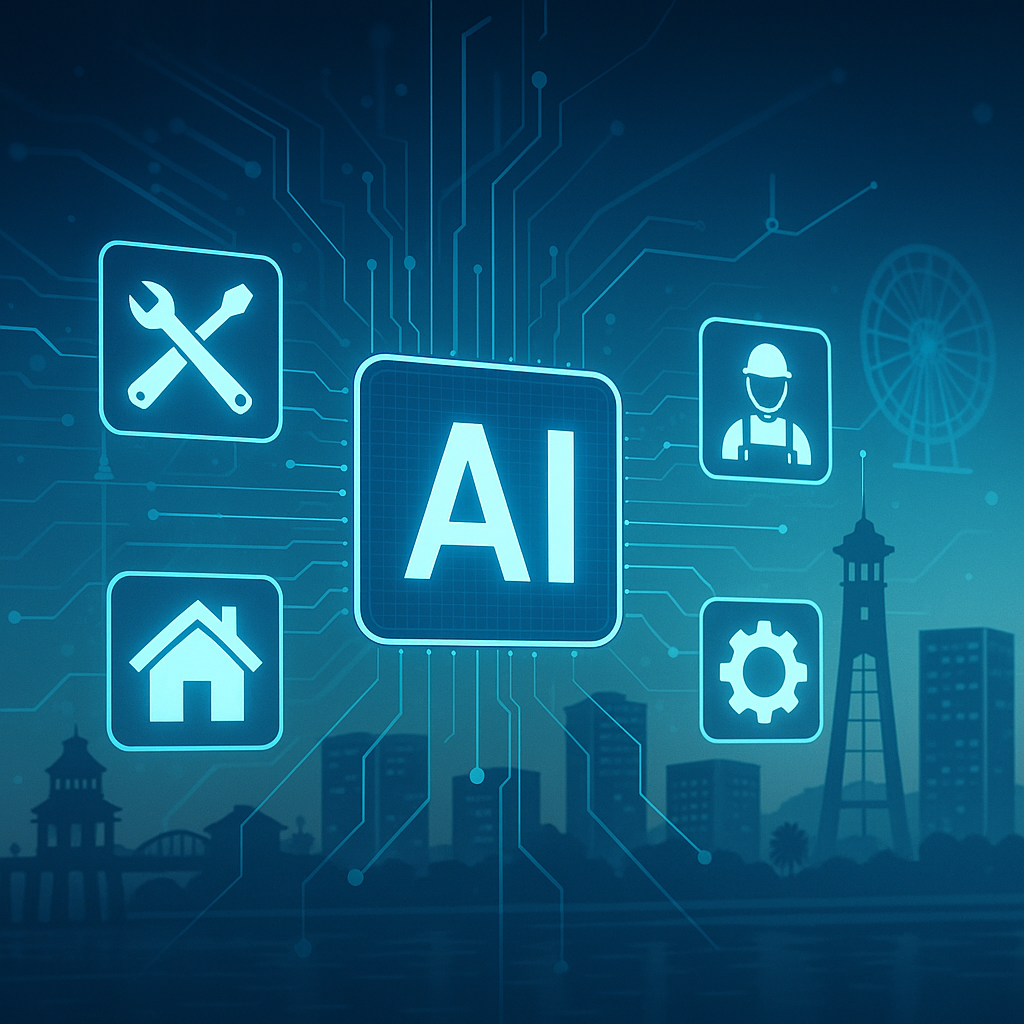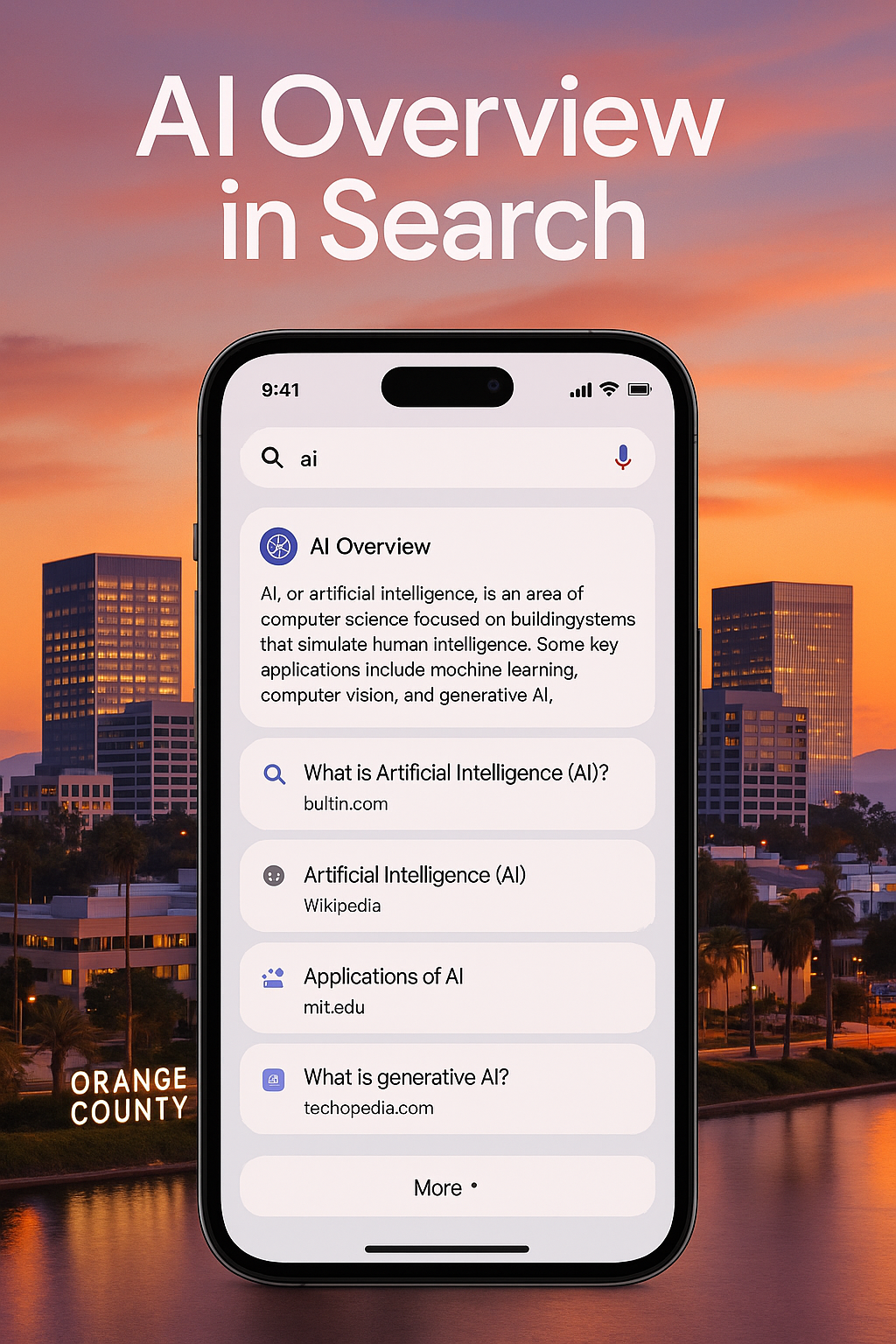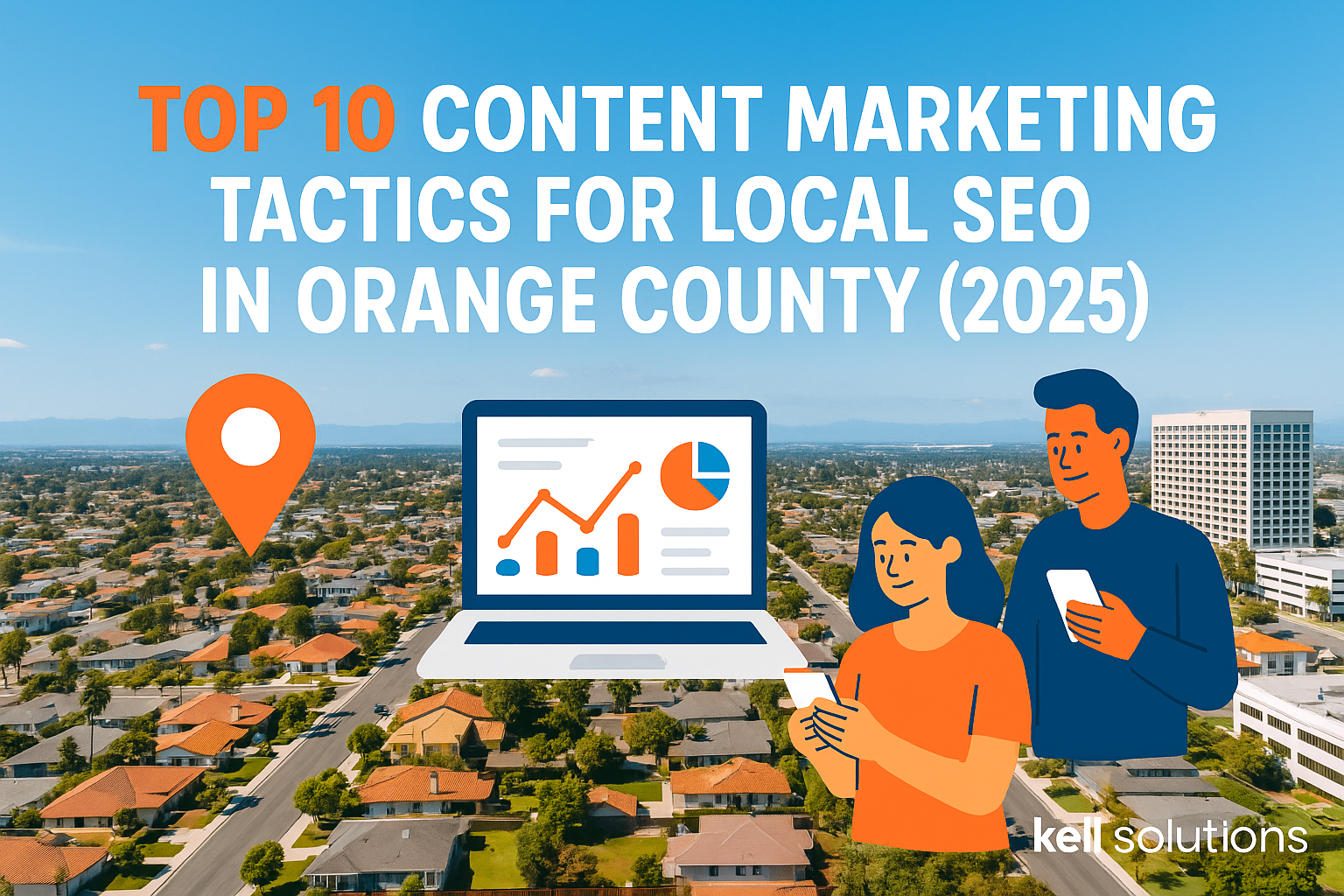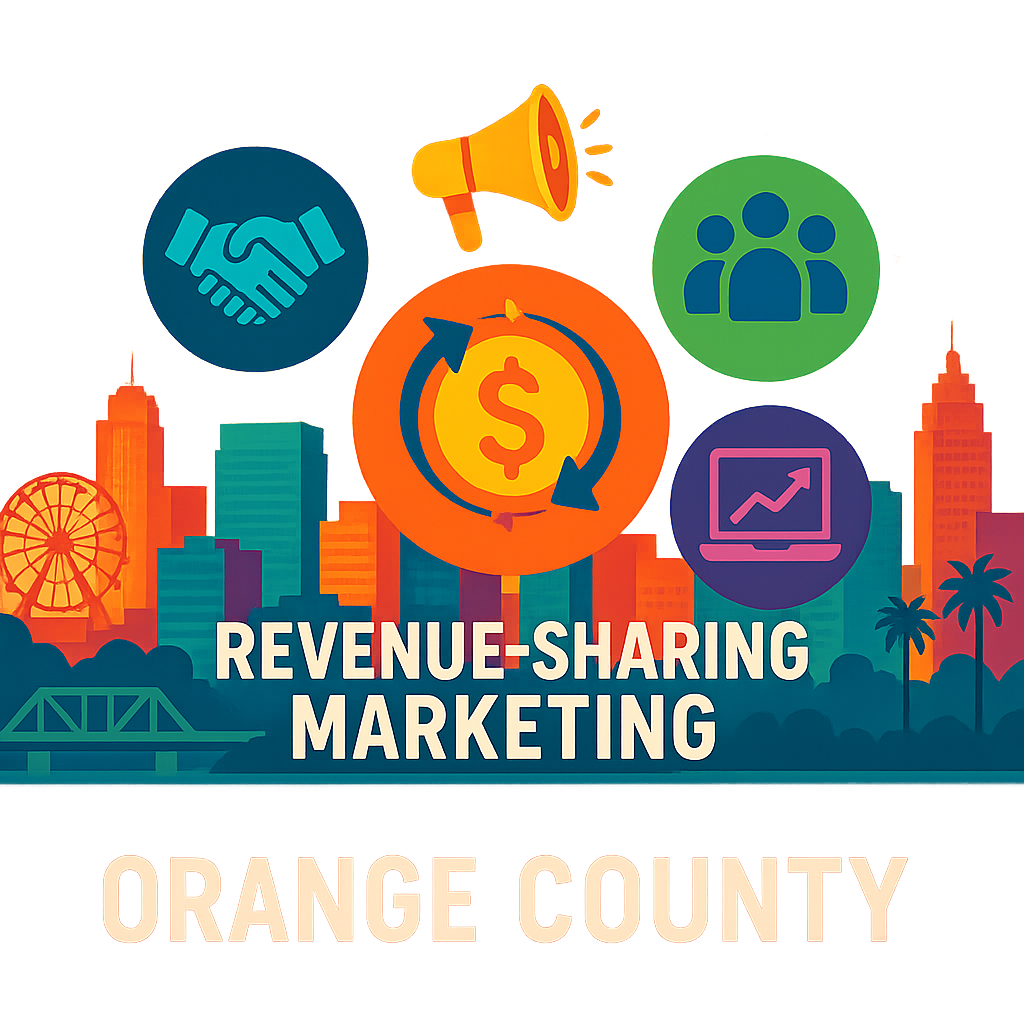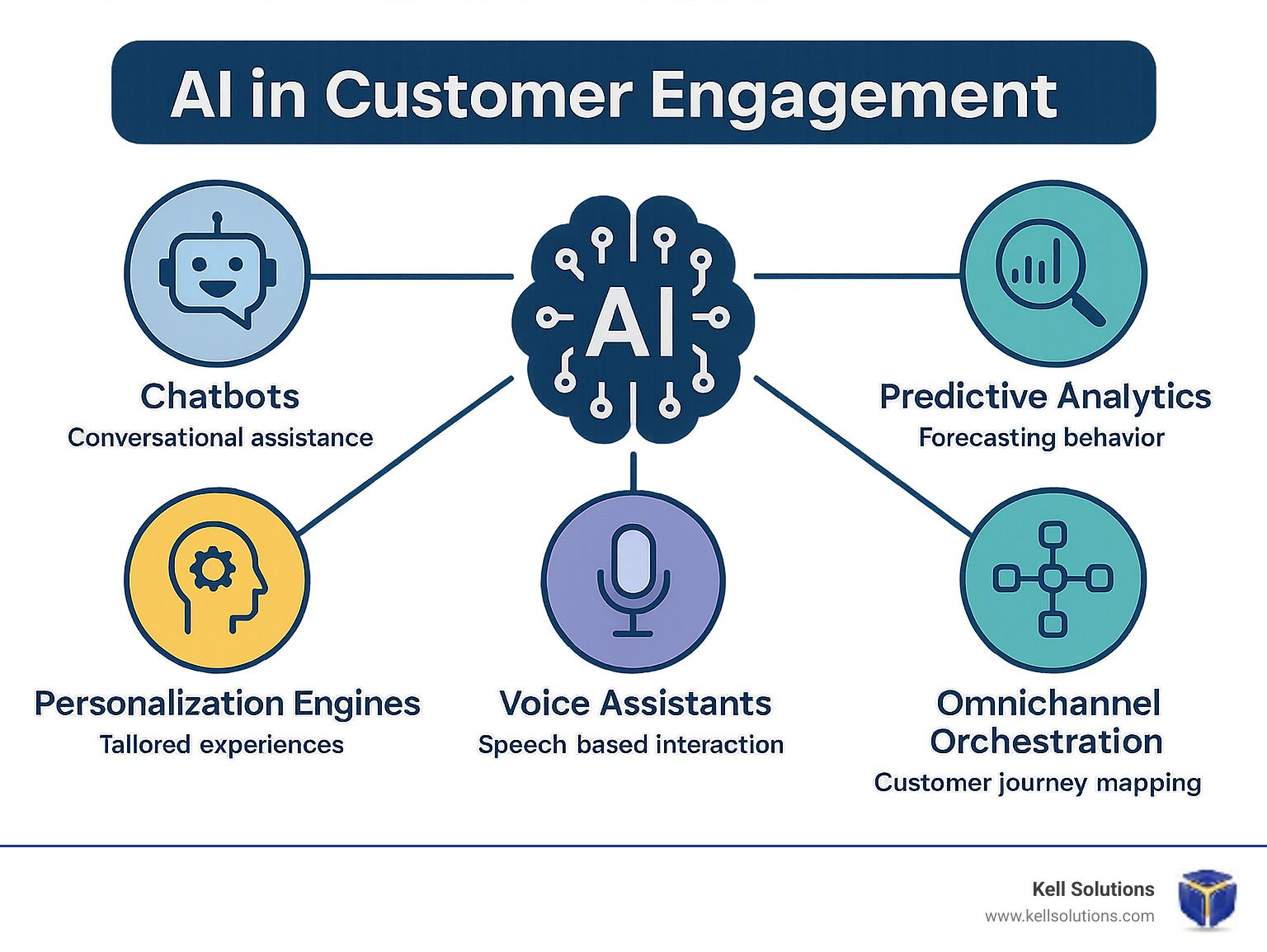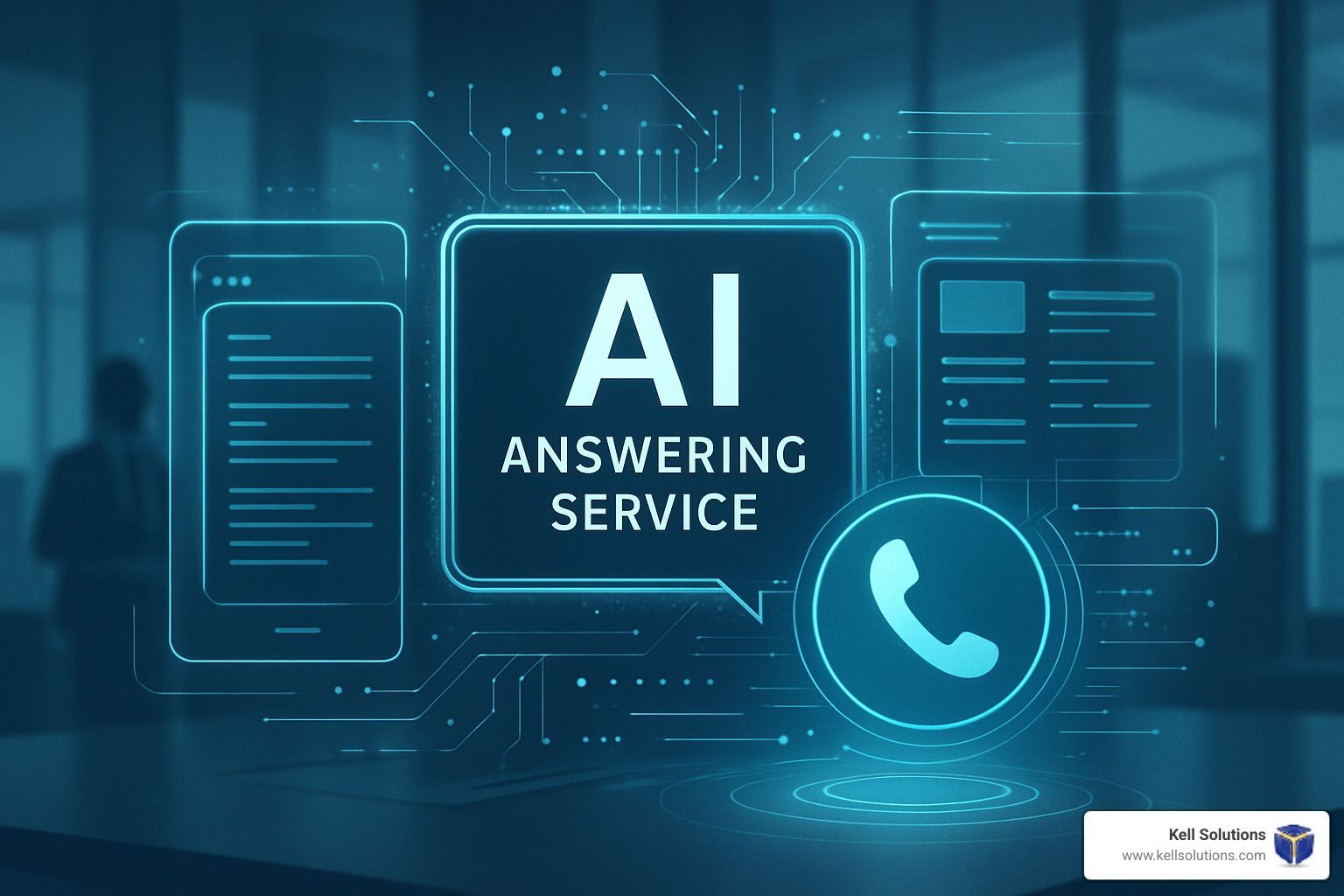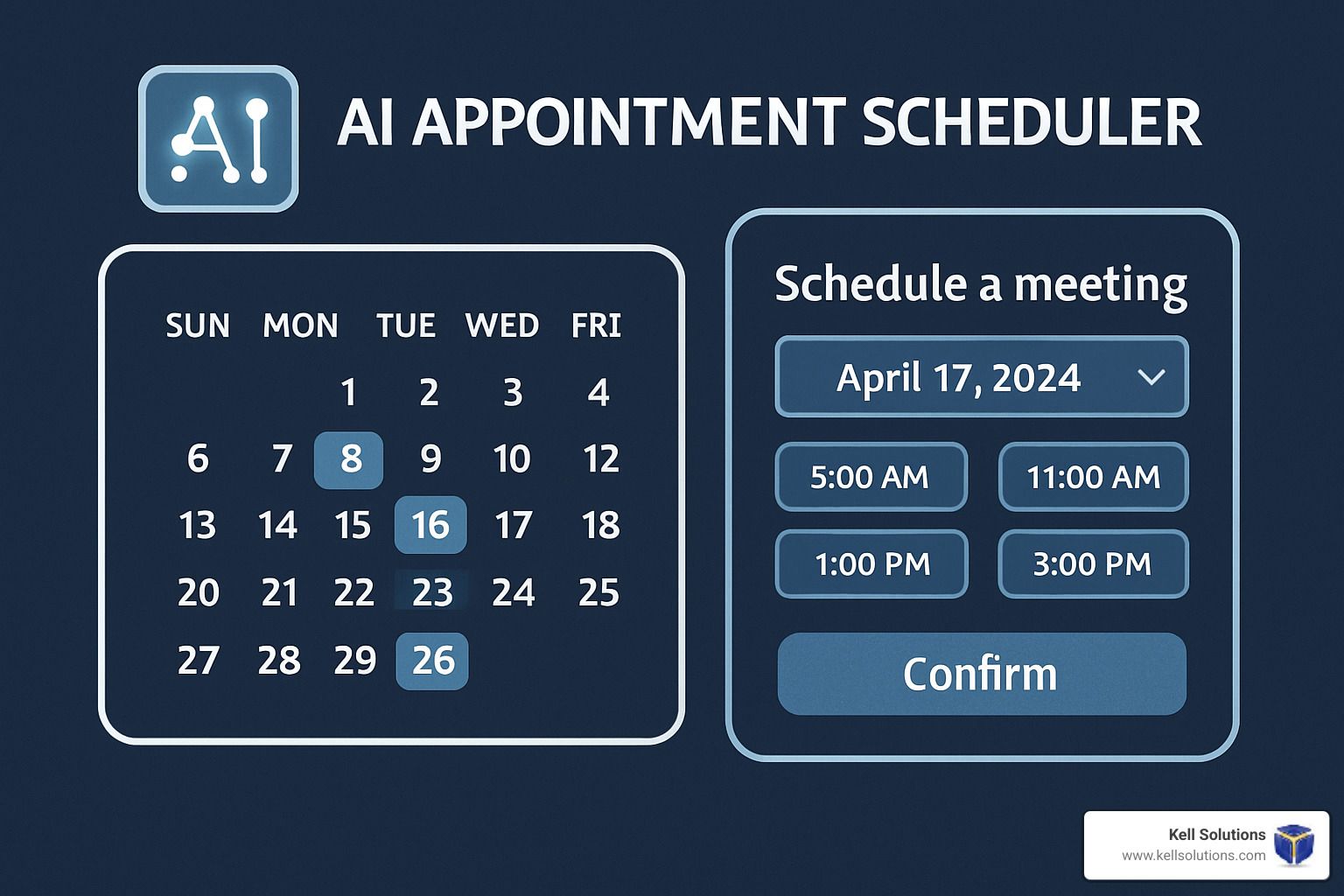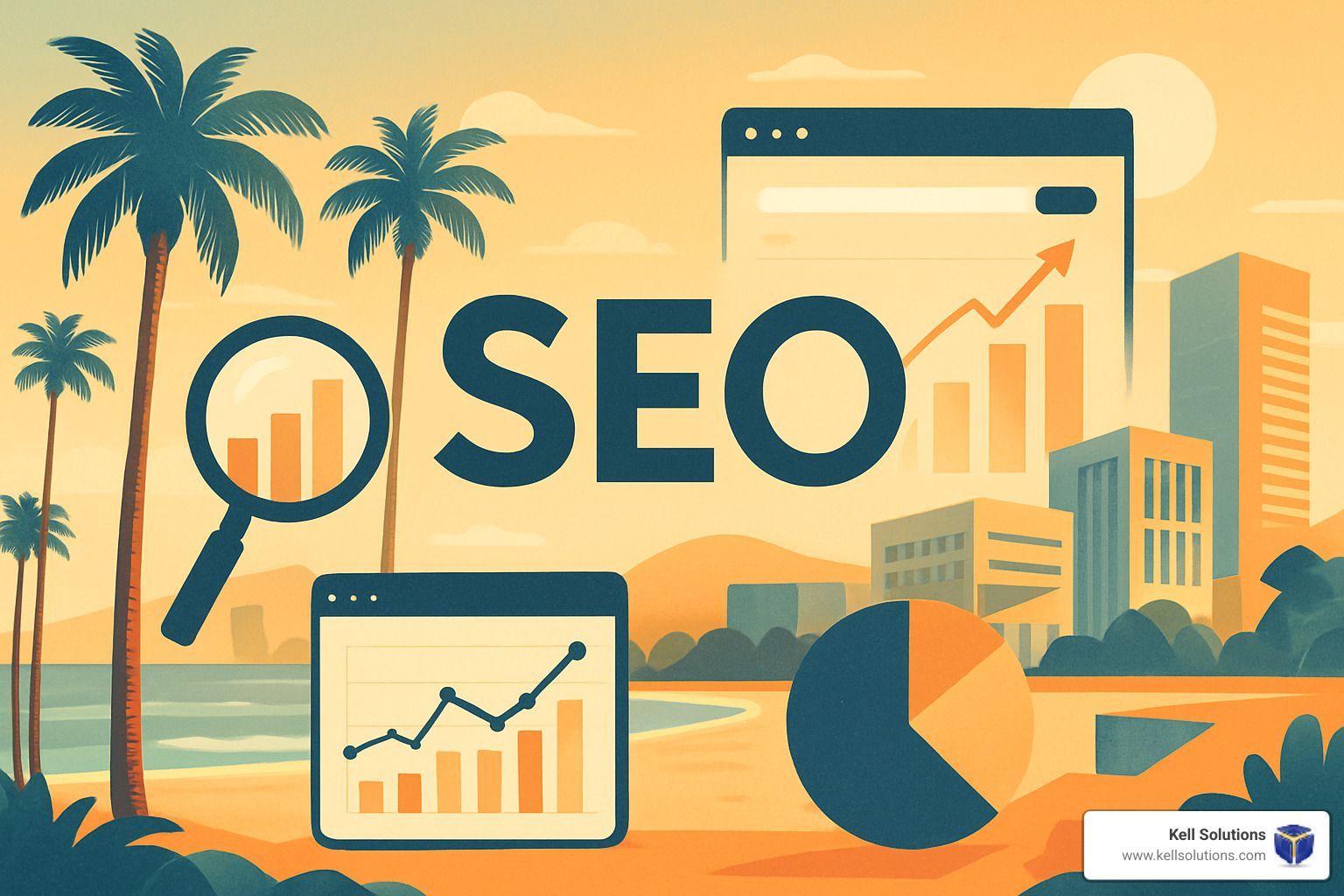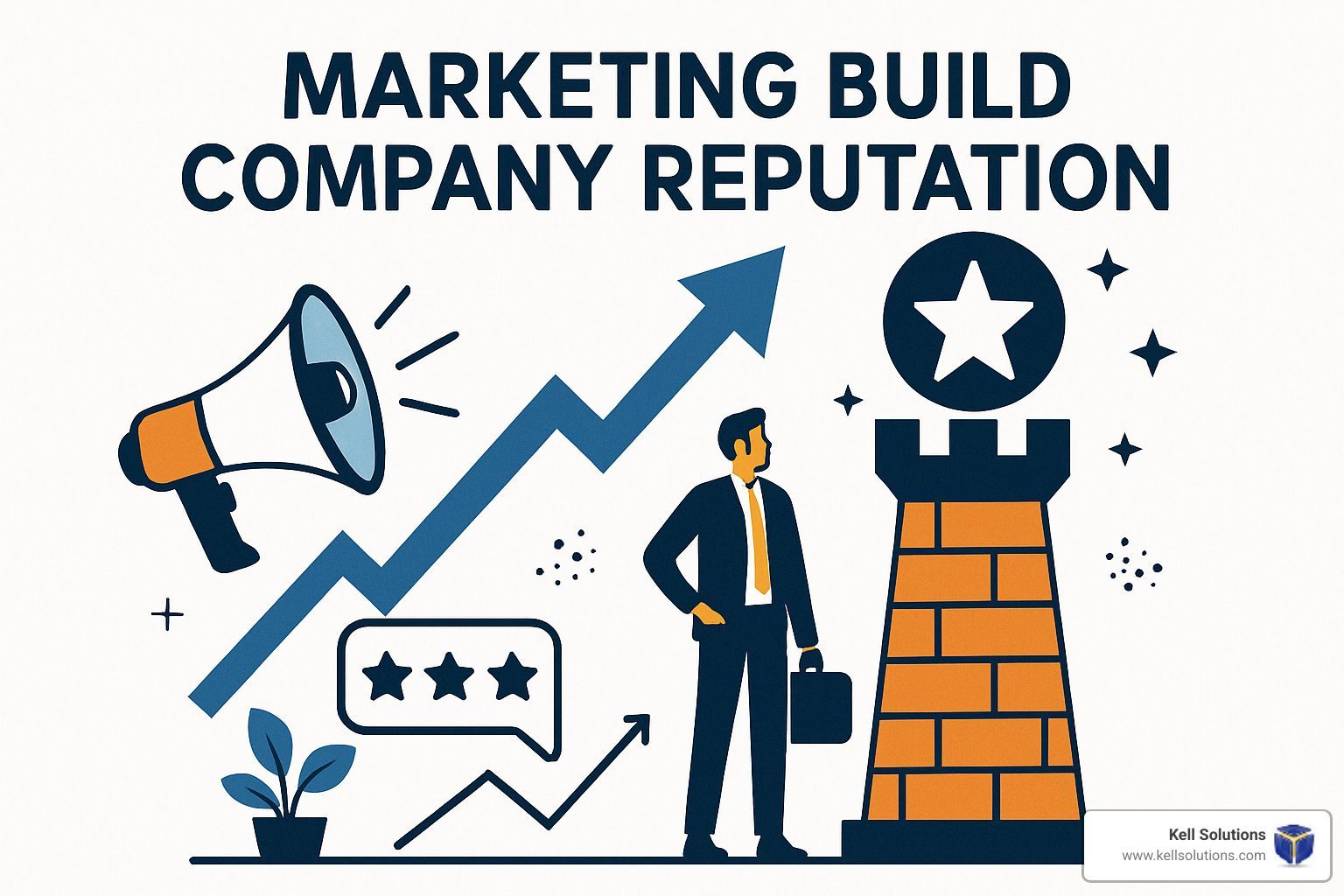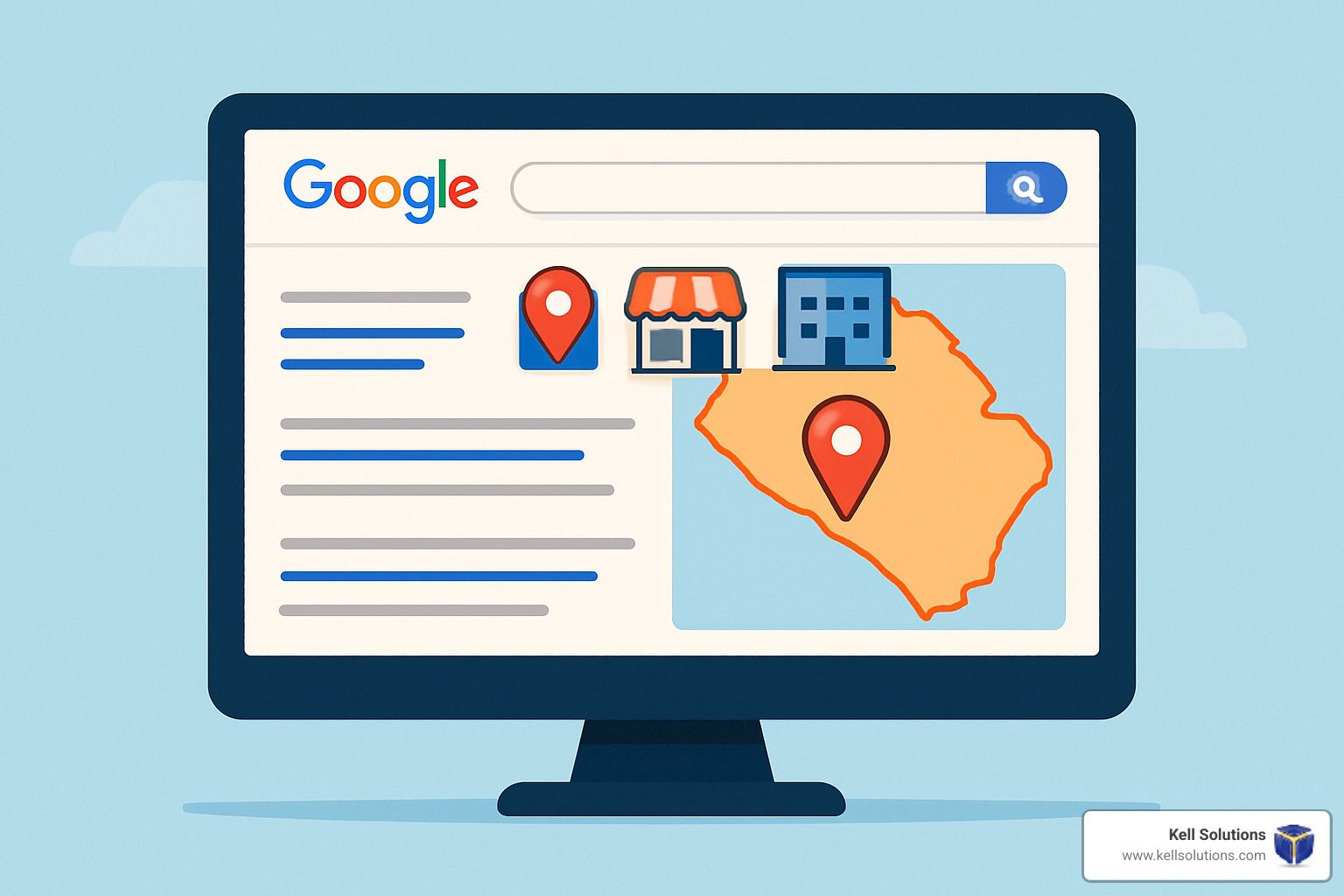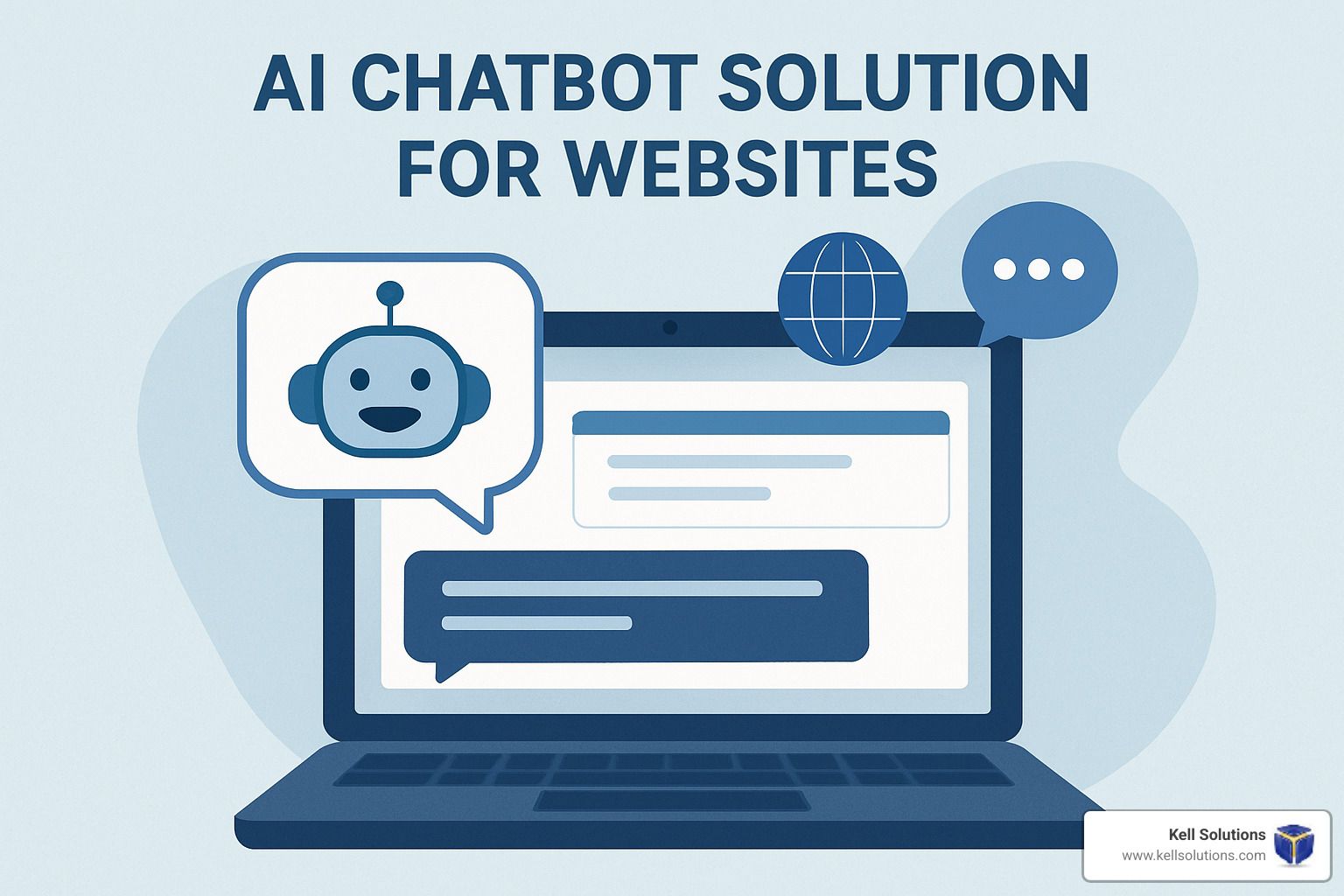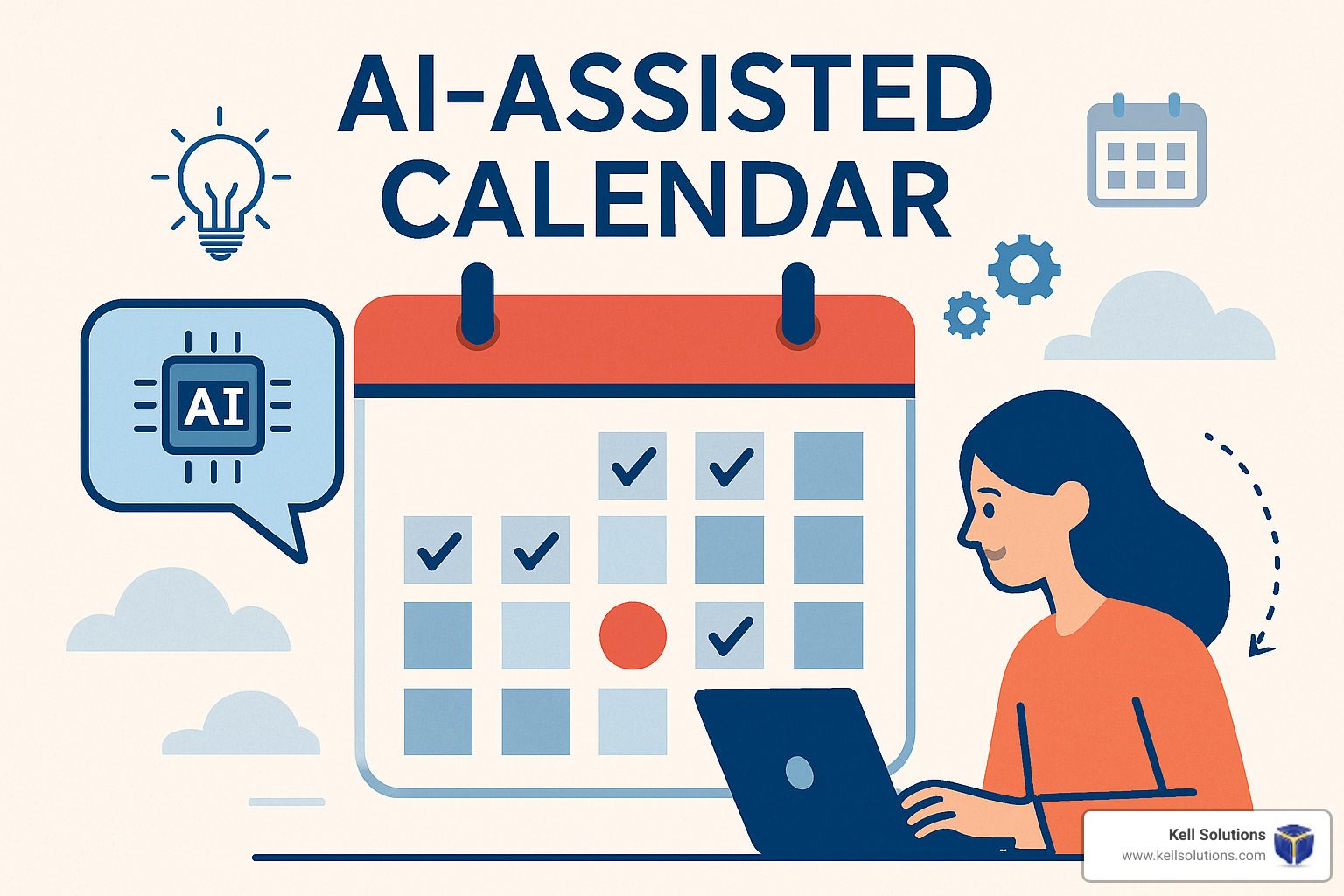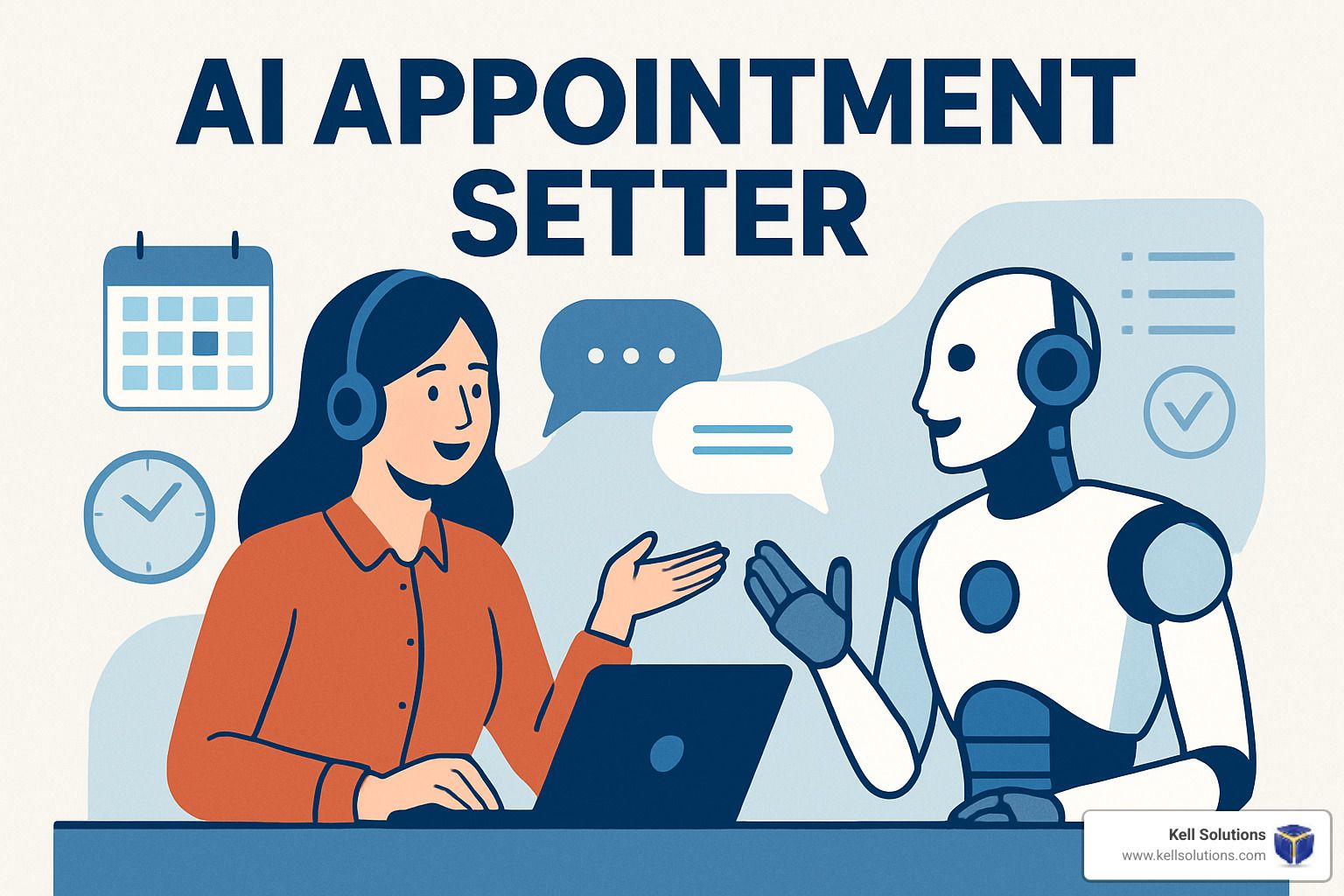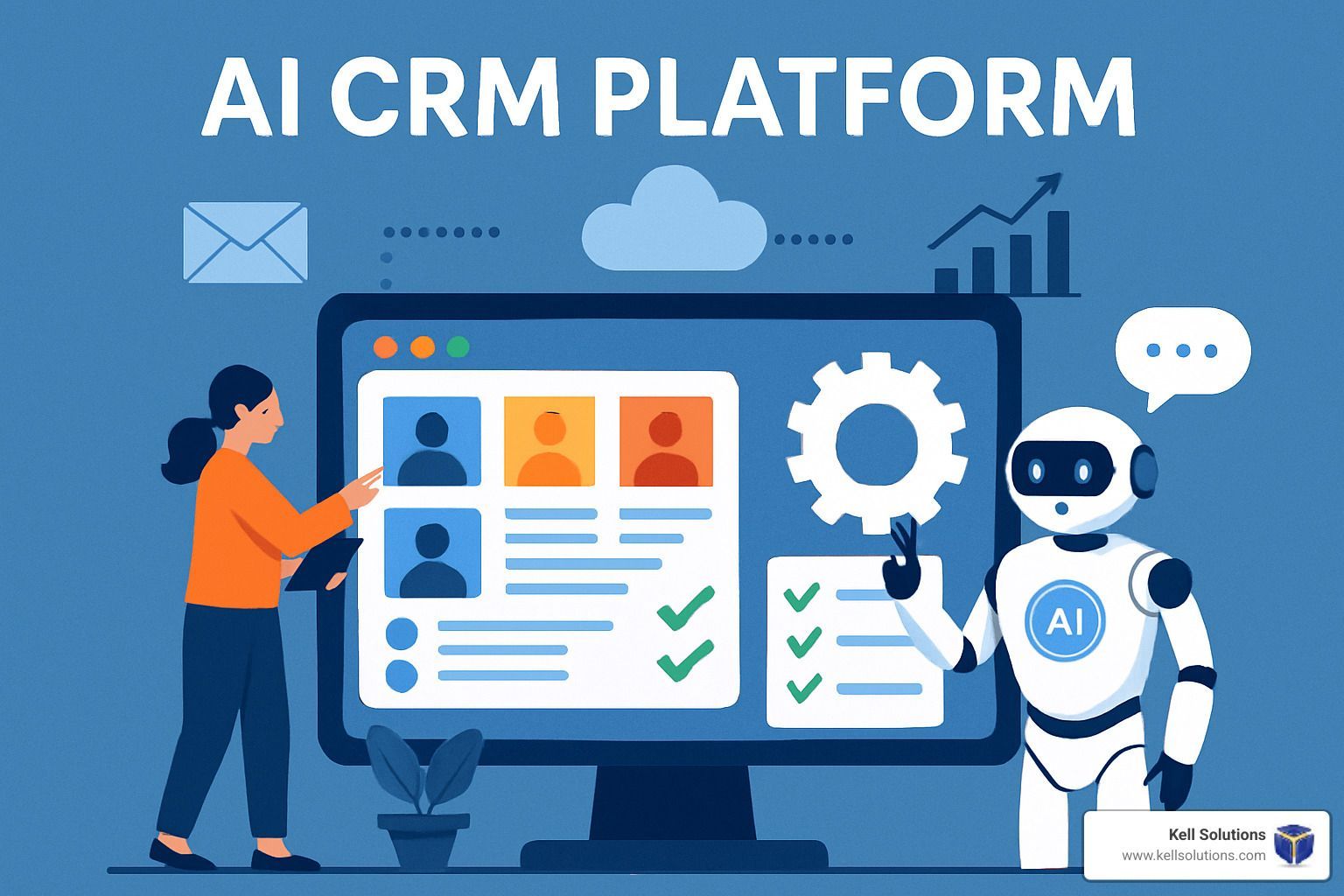Orange County HVAC Google AI Overview Domination: 7 Proven Strategies to Capture Featured AI Results
Unlock Top Google AI Visibility for Your HVAC Business in Orange County with These 7 Proven Tactics
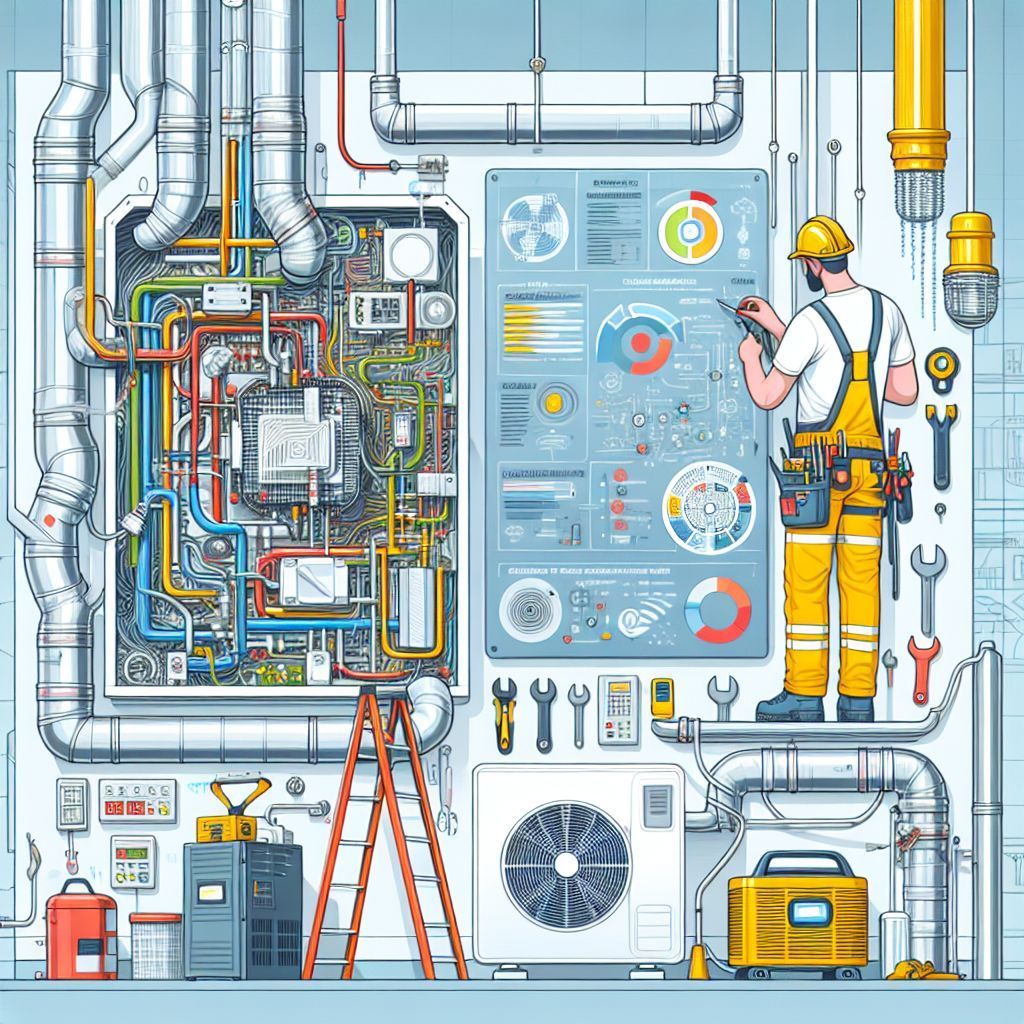
Key Takeaways
- Google's AI Overviews appear in approximately 19% of HVAC-related searches in Orange County, requiring contractors to adapt their digital marketing strategies
- Hyperlocal content focusing on specific Orange County neighborhoods significantly increases visibility in both traditional and AI-powered search results
- Properly structured FAQ content with schema markup can help your HVAC business get featured in Google's AI responses
- Seasonal content strategies tailored to Orange County's unique climate patterns boost your chances of appearing in AI Overviews
- Implementing all seven strategies outlined can lead to up to 32% higher visibility in Google's AI-enhanced search results
The HVAC industry in Orange County is facing a digital revolution that's changing how homeowners find and select service providers. Google's AI system is now directly answering customer questions before they even click on a website, creating both challenges and opportunities for forward-thinking contractors. Today's winning strategy requires more than traditional SEO—it demands an understanding of how AI interprets, evaluates, and prioritizes HVAC content.
This comprehensive guide will walk you through seven proven strategies that Orange County HVAC contractors are using to dominate Google's AI Overviews. Premier HVAC Solutions has been tracking these AI changes since their introduction and helping contractors adapt their digital presence to thrive in this new landscape. The difference between companies that adapt and those that don't could mean thousands of potential customers never seeing your services.
Article-at-a-Glance
Google's AI is fundamentally altering how Orange County homeowners discover HVAC services. This article outlines seven actionable strategies for HVAC contractors to capture AI visibility, from creating hyperlocal content to implementing proper schema markup. You'll learn exactly how to structure your digital presence to become the source Google's AI references when homeowners ask questions about heating, cooling, or air quality issues in Orange County.
These techniques aren't theoretical—they're being successfully implemented by leading contractors who are seeing measurable increases in calls, consultations, and conversions despite the AI disruption. By following this roadmap, you'll position your HVAC business to thrive in both traditional search results and AI-generated overviews.
How Google AI Is Reshaping HVAC Marketing in Orange County
Orange County's HVAC market has always been competitive, but Google's AI integration has rewritten the rules of visibility. When homeowners search for services like "AC repair in Irvine" or "furnace installation in Newport Beach," they're increasingly met with AI-generated answers pulled from various sources rather than a simple list of companies. This shift means contractors must now compete not just for rankings but for citation within these AI responses.
Why Your HVAC Business Is Losing Visibility to AI Overviews
Many established Orange County HVAC companies are experiencing a troubling trend: despite maintaining strong traditional rankings, their websites are receiving fewer clicks. The culprit is often Google's AI Overview appearing at the top of search results, providing answers to common questions without requiring users to visit any website. This "zero-click" phenomenon is particularly problematic for service industries like HVAC where customer inquiries often begin with questions about costs, timelines, or technical specifications.
The contractors who haven't adapted their content strategy are essentially feeding information to Google's AI without receiving the benefit of customer contact. Meanwhile, companies that have implemented AI-friendly content structures are seeing their brand mentioned directly in these overviews, establishing authority even when users don't immediately click through.
The 19% Reality: How Often AI Steals Your Top Position
Current data shows that approximately 19% of HVAC-related searches in Orange County now trigger AI Overviews. This percentage increases dramatically for informational queries (reaching up to 43% for questions about efficiency ratings or system types) and decreases for immediate service needs (dropping to around 12% for emergency repair searches). Understanding this distribution is crucial because it allows contractors to focus their AI optimization efforts where they'll have the greatest impact.
The seasonal nature of HVAC services in Southern California creates predictable patterns in how AI presents information. During summer months, searches related to AC efficiency, cooling capacity, and energy savings are more likely to generate AI Overviews than during mild winter months. This predictability allows savvy contractors to adjust their content calendar to target AI visibility when it matters most.
Most concerning for established businesses is the trend line—the percentage of searches triggering AI responses has increased steadily since introduction, suggesting this shift is only beginning. Contractors who adapt early will establish AI authority that becomes increasingly difficult for competitors to displace.
Click-Through Rates Before and After AI Implementation
The impact on actual customer engagement is stark. Pre-AI data showed top-ranking HVAC websites in Orange County enjoying click-through rates of 26-32% for high-intent keywords. Post-AI implementation, those rates have declined by an average of 17% for companies that haven't adapted their strategy. However, contractors who have optimized for AI citation are seeing a different outcome—while direct clicks might decrease, brand recognition and phone calls from informed customers have actually increased.
This paradoxical effect occurs because Google's AI often cites specific companies as sources for the information it provides. When your business is referenced as the authority on "proper HVAC sizing for Anaheim homes" or "energy-efficient cooling for Mission Viejo," you gain credibility even without an immediate website visit. The key is structuring your content to maximize these citation opportunities.
The Geographic Impact: Orange County's Unique AI Search Patterns
Orange County presents distinctive AI search patterns that differ from national trends. The coastal communities like Laguna Beach and Newport show higher rates of AI-triggered results for luxury and high-efficiency systems, while inland areas like Anaheim and Santa Ana see more AI responses related to cost-effective cooling solutions and emergency services. This geographic variation requires tailored content strategies that address the specific concerns of homeowners in different Orange County neighborhoods.
Another regional factor is Orange County's mild climate with occasional extreme heat events. This creates a unique pattern of seasonal searches that Google's AI is learning to anticipate. Smart contractors are developing content that addresses these regional climate peculiarities, positioning themselves as local experts that AI systems recognize as authoritative sources for area-specific information.
Strategy 1: Create Hyperlocal Content That AI Can't Ignore
Google's AI system heavily weights geographic relevance when presenting HVAC information to Orange County residents. Generic content about air conditioning repair won't cut it anymore—you need neighborhood-specific pages that signal deep local expertise. AI systems are programmed to prioritize content that demonstrates genuine local knowledge over broad service descriptions.
The contractors seeing the best results are creating dedicated pages for each major Orange County community they serve, with specific information about common HVAC challenges in those areas. This hyperlocal approach satisfies both traditional SEO requirements and the more sophisticated contextual understanding of AI systems.
Neighborhood-Specific HVAC Pages That Signal Geographic Authority
Creating dedicated service pages for neighborhoods like Irvine, Huntington Beach, or Yorba Linda allows you to address specific HVAC concerns relevant to those communities. In Laguna Beach, for example, you might focus on salt air corrosion protection for outdoor condensers, while in Anaheim Hills, wildfire smoke filtration becomes a more pressing concern. This granular approach signals to Google's AI that you possess authentic local expertise.
The most effective neighborhood pages include specific street names,
landmarks, and local building characteristics that only a true area expert would know. When you mention "the unique cooling challenges of older Spanish Colonial homes near Chapman University" or "proper humidity control for oceanfront properties along PCH in Newport," you're creating content that AI systems recognize as genuinely authoritative for those specific search contexts.
Local Climate Data Integration for Seasonal Relevance
Orange County's microclimate variations create distinct HVAC requirements that Google's AI is increasingly able to recognize. Incorporating specific climate data for different areas—like the temperature difference between coastal Dana Point and inland Fullerton during summer months—demonstrates sophisticated local knowledge that AI systems prioritize when selecting sources for overviews.
Leading contractors are creating seasonal content that references specific weather patterns, such as "preparing your AC for Santa Ana winds" or "humidity control during May Gray and June Gloom along the coast." This climate-specific content not only engages local homeowners but signals to AI systems that your content provides contextually relevant information for that precise geographic area.
Orange County Building Code Knowledge as Trust Signals
References to Orange County's specific building codes, permit requirements, and energy efficiency regulations serve as powerful trust signals that Google's AI recognizes. When your content discusses "Title 24 compliance for Newport Beach new construction" or "Irvine's specific requirements for HVAC replacements in planned communities," you're demonstrating regulatory expertise that generic competitors lack.
Strategy 2: Structure Your HVAC FAQ Content for AI Recognition
Google's AI primarily seeks to answer questions, making well-structured FAQ content one of your most powerful tools for gaining visibility. The key is creating FAQs that mirror actual homeowner questions rather than marketing-focused content disguised as FAQs. AI systems are increasingly sophisticated at distinguishing between genuine informational content and thinly-veiled promotional material.
Successful Orange County HVAC contractors are organizing their FAQ content in ways that directly align with how homeowners naturally phrase their questions. This approach increases the likelihood that your content becomes the source for AI-generated answers, especially when implemented with proper schema markup that helps Google understand the question-answer relationship.
Question-Answer Format That Mirrors Voice Search Patterns
Voice search has dramatically changed how Orange County homeowners inquire about HVAC services. Instead of typing "AC repair cost Orange County," they're asking "How much does it cost to repair an air conditioner in Irvine?" Creating content that matches these conversational patterns significantly increases your chances of being featured in AI responses.
The most effective approach structures questions in complete sentences that match natural speech patterns and provides clear, concise answers that Google's AI can easily extract. When a homeowner asks their smart speaker about "replacing a furnace in an older Mission Viejo home," the AI will prioritize content that directly addresses that specific scenario in a conversational format.
3 FAQ Schema Implementation Steps for HVAC Websites
Proper schema implementation transforms ordinary FAQ content into structured data that Google's AI can confidently parse and feature. The three essential steps include: 1) Implementing the FAQ Page schema markup around your entire FAQ section, 2) Marking each individual question with the Question property, and 3) Tagging each answer with the accepted Answer property. This technical structure signals to Google that your content is specifically designed to answer user questions.
- Use FAQ Page schema as the container for all questions and answers
- Structure each question-answer pair with proper Question and accepted Answer properties
- Include geographic modifiers in questions when relevant to Orange County locations
- Test implementation using Google's Rich Results Test tool before publishing
- Monitor which FAQ content gets featured in AI Overviews and expand on successful topics
Top 10 HVAC Questions Orange County Homeowners Ask Google
Research reveals that Orange County homeowners consistently ask specific questions that trigger AI Overviews. The top questions include cost comparisons between heat pumps and traditional systems, energy efficiency ratings for coastal versus inland installations, and expected lifespans of HVAC systems in Southern California's climate. Creating comprehensive answers to these specific questions significantly increases your chances of being featured in AI responses.
Beyond the common questions, seasonal patterns emerge in Orange County searches. Summer brings questions about AC efficiency in high humidity, while winter generates inquiries about the cost-effectiveness of heating systems in mild climates. Tracking these seasonal trends allows you to develop timely content that aligns with current homeowner concerns, increasing the relevance signals that Google's AI evaluates.
Strategy 3: Leverage Technical Schema Markup for HVAC Services
Beyond basic FAQ schema, implementing comprehensive service-specific schema markup dramatically increases your visibility in Google's AI Overviews. This technical approach communicates the precise details of your HVAC services in a language Google's AI can confidently interpret and feature. Contractors who have implemented full service schema are seeing up to 43% higher inclusion rates in AI responses compared to those using basic or no schema.
This structured data approach requires some technical expertise but delivers outsized returns in the AI-first search environment. Properly marked-up content helps Google understand exactly what services you provide, where you provide them, and what makes your offerings distinct in the Orange County market.
Service-Specific Schema Types That Boost AI Recognition
Different HVAC services benefit from specialized schema types that signal specific capabilities to Google's AI. For installation services, using the Service Type schema with detailed HVAC equipment specifications helps Google understand exactly what systems you install. For maintenance services, the Maintenance Service schema with frequency and component details provides the structured information AI systems prefer when generating overview answers.
Emergency services particularly benefit from proper schema implementation that includes availability hours, response times, and service area details. When Orange County homeowners search for "emergency AC repair in Tustin" at 10 PM, Google's AI will prioritize results with clear schema indicating 24-hour availability in that specific location.
Price Range Markup Implementation Without Revealing Exact Quotes
One of the most effective schema implementations for HVAC contractors involves price range markup that satisfies homeowner questions about cost without committing to exact quotes. Using the price Range property within your Local Business schema allows you to indicate general pricing tiers like "$$" or "$$$" while the description property can provide context about factors that influence final pricing.
This approach addresses the common homeowner question about cost while maintaining flexibility for your actual pricing model. Google's AI increasingly features this structured pricing information in Overviews, making it a critical component for contractors who want to control how their pricing is represented.
How to Tag Emergency vs. Maintenance Services for Different AI Triggers
Google's AI applies different relevance criteria to emergency versus routine HVAC searches. For emergency services, availability and response time schema properties take priority, while for maintenance services, the service Frequency and service Output properties carry more weight. Understanding these distinctions allows you to optimize each service page for its specific AI trigger conditions.
The most sophisticated implementation includes temporal markup that indicates seasonal availability and specialization. This approach signals to Google's AI when your content is most relevant throughout Orange County's cooling and (mild) heating seasons, increasing the likelihood of being featured during those peak demand periods.
Strategy 4: Build Deep Content Silos Around Seasonal HVAC Needs
Orange County's distinct seasonal patterns create predictable HVAC search trends that Google's AI is designed to recognize. Creating comprehensive content clusters around these seasonal needs establishes your website as the authoritative source for specific temporal concerns. This approach mirrors how Google's AI categorizes and prioritizes information based on seasonal relevance.
The key is developing interconnected content that thoroughly addresses all aspects of seasonal HVAC needs rather than isolated pages that compete with each other. This content silo approach creates the depth and breadth of information that AI systems recognize as authoritative on specific seasonal topics.
Summer Cooling Pages Optimized for Orange County Heat Waves
Orange County's summer cooling demands create specific search patterns that your content should address comprehensively. Creating detailed pages about "preparing for Santa Ana heat waves," "coastal versus inland cooling needs," and "humidity management during summer months" establishes your authority on the precise challenges that trigger homeowner searches during peak cooling season.
The most effective summer content includes specific references to Orange County's microclimate variations, such as how coastal cooling needs in Huntington Beach differ from inland requirements in Anaheim. This geographic specificity signals to Google's AI that your content offers precisely targeted information rather than generic cooling advice.
Winter Heating Content for Mild Southern California Climates
While Orange County's winters are mild compared to other regions, they still generate specific HVAC queries that Google's AI must address. Content focusing on "energy-efficient heating for mild climates," "heat pump advantages in Southern California," and "preparing your system for occasional cold snaps" addresses the unique winter concerns of local homeowners.
Particularly effective are pages that address the cost-benefit analysis of heating investments in mild climates, as Orange County homeowners often question the value of high-efficiency heating systems. When Google's AI encounters questions about this cost-benefit consideration, it will prioritize content that directly addresses this specific regional concern.
Seasonal Maintenance Guides That Establish Expertise Signals
Comprehensive maintenance guides aligned with Orange County’s unique climate patterns send powerful expertise signals to Google's AI. Content addressing specific maintenance needs like "preparing your AC for coastal salt air exposure" or "filter selection for Santa Ana wind seasons" demonstrates deep technical knowledge about regional challenges.
These maintenance guides are particularly effective when structured as step-by-step resources with clear seasonal timing recommendations. This approach helps Google's AI understand not just what maintenance is needed, but when it's most relevant to Orange County homeowners throughout the year.
Strategy 5: Generate Customer Reviews That Feed AI Algorithms
Customer reviews have taken on new importance in the AI search environment, as Google increasingly features review content directly in AI Overviews. Reviews now serve dual purposes: influencing traditional rankings and providing content that AI systems can extract and feature in overview responses. The nature of reviews that perform best in AI environments differs from those that simply boost star ratings.
Forward-thinking HVAC contractors in Orange County are implementing systematic review generation strategies that produce the specific types of content that Google's AI values most highly. This approach focuses on generating reviews that include detailed problem descriptions, solution narratives, and location-specific references.
How to Request Problem-Solution Reviews That AI Values
The most AI-friendly reviews follow a specific structure that mirrors how Google's AI evaluates and extracts information. When requesting reviews from satisfied customers, provide gentle guidance toward a problem-solution narrative that describes the specific HVAC issue they experienced, why they selected your company, and how your solution resolved their particular situation.
These structured reviews are far more likely to be featured in AI Overviews than generic "great service" comments because they provide the contextual information that AI systems can confidently present as relevant to specific user queries. When an Orange County homeowner searches for information about a particular HVAC problem, Google's AI can extract and feature the relevant portions of these detailed reviews.
Location Tags in Reviews That Reinforce Geographic Authority
Reviews that include specific Orange County location references send powerful geographic relevance signals to Google's AI. Encourage customers to mention their specific neighborhood or community when leaving reviews, as this helps AI systems understand the precise geographic scope of your expertise.
Reviews mentioning "quick response to our Laguna Niguel home" or "the technician's familiarity with our Fountain Valley neighborhood's common AC issues" create the location-specific credibility that Google's AI increasingly prioritizes when generating local service overviews. This hyperlocal review content complements your neighborhood-specific service pages to create consistent geographic authority signals.
Response Strategies That Double Your Review Content Value
How you respond to reviews significantly impacts their value in Google's AI evaluation. Thoughtful responses that add additional technical context or location-specific information effectively double the useful content from each customer interaction. For example, responding to a review about an AC repair with additional information about common causes of that issue in their specific Orange County neighborhood adds valuable content that AI systems can extract.
The most effective responses include specific technical details that demonstrate expertise without overwhelming the customer. Phrases like "Your Irvine home's air handler issue is common in properties built during the 1990s development boom" add the kind of specific, factual information that Google's AI recognizes as authoritative and useful for other homeowners with similar concerns.
Strategy 6: Create Multi-Format Content to Capture Multiple AI Channels
Google's AI increasingly incorporates content from multiple formats and platforms when generating overviews. HVAC contractors who limit themselves to text-based website content are missing significant opportunities to appear in AI responses that draw from videos, images, podcasts, and other media formats. The most successful Orange County contractors are developing comprehensive multi-format content strategies that maximize their visibility across all AI-evaluated channels.
This approach requires more resource investment but creates multiple pathways for your expertise to be featured in AI Overviews. As Google's AI becomes increasingly sophisticated at extracting information from various media types, contractors with diverse content formats gain significant advantages over text-only competitors.
Image Content That Ranks in Visual AI Searches
Google's AI has become remarkably adept at understanding and contextualizing image content, creating new opportunities for HVAC contractors to appear in visual searches. Creating detailed infographics about "proper HVAC sizing for different Orange County home types" or "energy efficiency comparisons for coastal versus inland installations" provides valuable visual content that AI systems can feature in overview responses.
The key to successful image optimization is comprehensive alt text and surrounding contextual content that helps Google's AI understand exactly what information the image conveys. Images with proper schema markup and detailed captions significantly outperform basic photos in terms of AI visibility and feature rates.
Audio Content Strategy for Voice Search Dominance
Voice search represents a growing percentage of HVAC queries in Orange County, particularly for emergency service needs. Creating podcast episodes or audio guides addressing common homeowner questions positions your content to be featured when users ask their smart speakers about HVAC concerns. The conversational nature of these audio formats aligns perfectly with how voice search users phrase their queries.
Transcribing your audio content and hosting it alongside the recordings provides the text-based content that Google's AI can easily parse while also offering the audio format that some users prefer. This dual-format approach effectively doubles your content's utility while sending strong signals about your commitment to comprehensive homeowner education.
Local contractors finding the most success with audio content are creating brief, focused episodes addressing specific seasonal concerns or common problems in particular Orange County communities. This targeted approach generates higher engagement rates than general HVAC information and signals geographic expertise to Google's AI systems.
Strategy 7: Measure and Adapt to AI-Specific Analytics
The emergence of AI Overviews requires new measurement approaches that go beyond traditional SEO metrics. While conventional analytics track website visits and conversions, AI visibility requires monitoring when and how your brand appears in Google's AI responses even when users don't click through to your site. This expanded measurement framework helps you understand your true digital visibility in the AI-first search environment.
New KPIs for Tracking AI Overview Success
Forward-thinking HVAC contractors are adopting new key performance indicators specifically designed to measure AI visibility. These include AI feature rate (how often your brand appears in AI Overviews), citation quality (whether your brand is presented as the primary authority or one of multiple sources), and zero-click brand impressions (exposure to your brand within AI responses that doesn't result in website visits).
Monthly Content Adjustment Framework Based on AI Performance
Successful adaptation to Google's AI requires a systematic approach to content refinement based on performance data. Establishing a monthly review cycle allows you to identify which content types and topics are gaining AI traction and which need adjustment. This iterative process typically follows a four-step framework: measure current AI visibility, identify content gaps or weaknesses, implement targeted improvements, and validate results through continued monitoring.
The most effective adjustment frameworks focus on enhancing content that's already receiving some AI visibility rather than completely overhauling underperforming pages. Google's AI tends to reinforce existing citation patterns, making incremental improvement of partially successful content more effective than creating entirely new resources.
Monthly AI Content Optimization Cycle
Week 1: Gather data on which queries trigger AI Overviews featuring your content
Week 2: Identify content gaps and enhancement opportunities based on partial features
Week 3: Implement targeted content improvements focusing on structure and completeness
Week 4: Validate improvements through testing and prepare for next cycle
This structured approach prevents scattered, reactive content changes and builds consistent signals that Google's AI recognizes as authoritative. The cumulative effect of these regular improvements typically produces significant visibility gains within 3-4 monthly cycles.
Competitive Analysis Tools for AI Search Visibility
New specialized tools are emerging to help HVAC contractors analyze how competitors appear in Google's AI Overviews. These tools track which companies are featured for specific query types, what content formats receive the most AI attention, and how seasonal factors affect AI citation patterns. This competitive intelligence helps you identify strategic opportunities to displace competitors or establish authority in underserved topic areas.
Your 90-Day Action Plan for Orange County HVAC AI Domination
Implementing these strategies requires a systematic approach that prioritizes high-impact activities while building toward comprehensive AI visibility. This 90-day action plan provides a structured timeline for Orange County HVAC contractors to systematically enhance their AI presence, starting with fundamental technical implementations and progressing to advanced content development and measurement systems.
The plan deliberately frontloads technical schema implementation and basic content structure improvements, as these foundational elements establish the technical framework that makes all subsequent content optimization more effective. By day 90, contractors following this plan typically see significant improvements in AI feature rates across multiple query types and seasonal categories.
Frequently Asked Questions
As HVAC contractors implement these AI optimization strategies, common questions arise about implementation details, expected results, and resource requirements. These answers provide practical guidance based on the experiences of Orange County contractors who have successfully navigated the transition to AI-first search visibility.
The most frequent questions reflect the tension between immediate results and long-term authority building. While some technical implementations produce relatively quick visibility improvements, establishing the deep content authority that dominates AI Overviews typically requires consistent effort over multiple months.
How quickly can I expect to see results after implementing these AI optimization strategies?
Initial visibility improvements typically appear within 2-4 weeks after implementing proper schema markup and basic content structure enhancements. These technical changes help Google's AI better understand your existing content, often resulting in quick inclusion in some overview responses. However, this represents only the beginning of the visibility improvement process.
More substantial AI visibility, particularly for competitive queries like "best HVAC contractor in Orange County," generally requires 2-3 months of consistent content development and refinement. This timeline reflects Google's cautious approach to establishing new authority sources for its AI Overviews, particularly for service categories with significant consumer impact like HVAC installation and repair.
The contractors seeing the fastest results typically prioritize seasonal content aligned with immediate homeowner needs while simultaneously building their broader content foundation. This approach captures timely visibility while establishing the comprehensive expertise signals that produce long-term AI authority.
Do I need to hire a technical SEO specialist to implement schema markup for my HVAC business?
- Basic FAQ schema can be implemented using Google's Structured Data Markup Helper with minimal technical expertise
- More complex service and local business schema typically requires some development knowledge or specialized plugins
- Comprehensive schema implementation with custom properties for HVAC-specific details generally benefits from professional assistance
- Ongoing schema maintenance and testing is as important as initial implementation
- The investment typically pays for itself through increased visibility within 3-6 months
Many Orange County contractors find that a hybrid approach works best: using simplified tools or plugins for basic schema implementation while engaging technical specialists for more advanced markup needs. This balanced approach manages costs while still capturing the most critical AI visibility benefits.
The technical complexity should be matched to your competitive environment. In highly competitive areas like Irvine or Newport Beach, comprehensive schema implementation often provides the edge needed to stand out in AI responses. In less saturated markets, even basic schema markup can significantly improve AI visibility.
Regardless of implementation approach, regular testing using Google's Rich Results Test tool is essential to ensure your schema remains properly formatted and up-to-date as Google's AI evaluation criteria evolve.
How is optimizing for Google AI different from traditional SEO for HVAC companies?
Traditional SEO focuses primarily on ranking websites in search results, while AI optimization centers on becoming the authoritative source that Google's AI cites when directly answering user questions. This fundamental difference requires a shift from competitive keyword targeting to comprehensive topic expertise demonstrated through structured, factual content. While traditional SEO benefits from strategic keyword usage, AI systems prioritize content that demonstrates deep subject knowledge through naturally written, information-rich resources that directly address specific user questions about HVAC in Orange County.
Will these strategies work for small HVAC businesses competing against larger Orange County companies?
Small HVAC businesses often have distinct advantages in the AI search environment because Google's systems prioritize specialized expertise over company size. A focused strategy that establishes deep authority in specific neighborhoods or service niches often outperforms broader but shallower content from larger competitors. Google's AI increasingly recognizes and rewards specialized knowledge, creating opportunities for smaller companies to dominate specific topic areas.
- Focus on establishing expertise in 2-3 specific neighborhoods rather than trying to cover all of Orange County
- Develop deep content around specialized services where you have particular expertise
- Leverage customer reviews that highlight your personalized service advantages
- Create content addressing specific HVAC challenges in your target communities
- Build relationships with local organizations that generate authoritative backlinks
The hyperlocal strategies outlined earlier in this guide are particularly effective for smaller companies, as they allow you to establish unmatched geographic authority in specific communities. When homeowners in those areas search for HVAC services, Google's AI will recognize and feature your specialized local expertise even if larger companies have more general content and broader service areas.
Several small Orange County HVAC contractors have successfully implemented this focused approach, becoming the featured authority in AI Overviews for their specific service areas while larger competitors struggle to demonstrate the same depth of local knowledge.
How much does it typically cost to implement a complete AI optimization strategy for an HVAC business?
Implementation costs vary widely based on your existing digital foundation and internal capabilities. Basic schema markup and content restructuring typically requires 15-30 hours of professional time, with costs ranging from $1,500-$3,000 for initial implementation. More comprehensive strategies including custom content development, multi-format media creation, and ongoing optimization generally require investments of $2,500-$5,000 per month for Orange County HVAC businesses in competitive markets.
Many contractors find success with a phased approach, starting with technical fundamentals and gradually expanding their content development as initial results demonstrate return on investment. This measured implementation allows smaller companies to compete effectively while managing cash flow and measuring specific returns on their digital marketing investments.
When evaluating costs, consider both direct implementation expenses and opportunity costs of inaction. HVAC contractors who have delayed AI optimization typically report declining lead generation from digital channels as their visibility in traditional search results becomes increasingly overshadowed by AI Overviews. The most successful contractors view AI optimization not as a marketing expense but as an essential business infrastructure investment in today's digital environment.
Premier HVAC Solutions helps Orange County contractors navigate these digital changes with customized AI optimization strategies that maximize visibility while respecting your budget constraints. Contact us today for a personalized AI visibility assessment that will show exactly how these strategies can be applied to your specific business.
